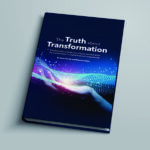

Forging a Pathway Into 2023
Issue 89, January 5, 2023
Two of the most important qualities we need (personally and professionally) to make good decisions are perspective and context. In order to move forward, both give relevance to how the past informs the present and can be predictive of how to plan for the future. If we take three tenses, we can reflect on what we have learned and how those insights can guide us today and tomorrow. Having said that, we are not talking about using the past as a static standard, but rather part of the flow that shapes our lives. As we contemplate the year ahead, we look forward to bringing you new insights based on our perspective in context of the ever-evolving, disruptive marketplaces we operate in.
Reflections
Here at 2040 we want to take this opportunity to thank all of our readers who have shared their appreciation and support when they found a newsletter highly connected to a challenge they were experiencing or simply as a reminder to consider a problem or situation differently with a new perspective. In that context, your feedback inspires us as we move forward.
As we look back across 52 issues of our 2022 newsletters, we learned from your feedback how a few key issues are shared among many of our readers.
- The workforce. The significant influence the pandemic has played has changed how individuals see work in context of their lives. Your feedback emphasized how leaders, managers and teammates continue to seek ways to evolve work by respecting others and offering a realistic equation for work/life balance.
- The challenges of thriving in a “woke” culture. This focuses on the need for personal sensitivity and critical thinking to ensure individual default bias does not derail group dynamics. Your feedback noted the necessity to support freedom of expression with empathy. It is a good reminder that we should not judge a person on the color of one’s skin and appearance, but rather on one’s character; we are all more the same than we are different.
- The importance of open, authentic communications. You told us how inclusive collaboration with a diverse, multigenerational workforce, with each generation having their perspectives, values, and beliefs, leads to better productivity when communications are respectful and nonjudgmental. Your feedback also noted the challenges of mastering the differences in how generations use words, acronyms, expressions and even punctuation. And not understanding these differences can result in some serious misinterpretations and misunderstandings.
- Digital platforms and technology. The skills and language of technology can be divide a workforce. Although this has historically been a generational issue with next-gens more comfortable and adept with technology, the gap is closing. Your feedback reveals that the individuals who get technology have a lower threshold of patience with those who do not. And leaders and managers who are not fluent in technology, data, and analytics are at a disadvantage in leading teams forward because they are ill equipped to understand how to use these tools.
Reader Favorites
We looked at the top-nine most-read newsletters of 2022. These were the most popular when they were first released and continue to be accessed on our website, Substack, LinkedIn and Medium. Check them out and see how they compare to your favorites.
- The New Rules of Work. What does it take to make a revolution? Or at the very least a fast-forward evolution? We are either going through a significant reset of work, or the tail end of a pandemic-influenced re-evaluation of work. Or both.
- Workforce Reset. The workforce is changing in real-time in terms of how employees want to be recognized, valued, and supported – and how employers are responding. In parallel to employee demands, there are some sea changes that are worth noting that are subtly reshaping how we define work and how we work.
- Why People Lie. One could argue that lies have become ingrained into our culture. As a society, where do we draw the ethical line? Where do those in our organizational systems draw the ethical line?
- Transitioning Under Pressure. Becoming marginal, or even worse, irrelevant requires the need to reinvent yourself. This turning point is happening for both younger and veteran professionals. A forced transition triggers organizations to reorganize, pivot, change or seek holistic, full-scale transformation.
- What is Your North Star. Without a North Star, no one in your organization knows where you are going; with a vision, everyone can take action that helps to move the vision forward and maintain it.
- Transformation is Messy Business. When it comes to digital transformation, some thought leaders correlate it to chaos theory. But patterns exist everywhere in everything and every action or non-action influences other parts of the pattern, which ultimately find a higher level of order and organization. The concept of chaos theory can certainly be applied to the market disruptions we have experienced lately.
- Inference Data. Human nature is often predictable. We don’t like to hurt people’s feelings, don’t like to disagree, and aren’t comfortable being confrontational. We also feel compelled, (often indebted if we are getting something in return) to give others what they want, make people feel good, and help them feel confident about their choices.
- Forewarned is Forearmed. Regardless of where an organization is on its path to becoming data-driven, the entire ecosystem has changed. Transformation to an actionable, transparent data-driven business model is critical to addressing the complexity of compliance, personalization, and privacy. Mastery of data is complex considering system limitations, lack of skillsets, and/or lack of understanding of the definition, value, and actionability of customer data.
- How to Manage a Multigenerational Workforce. Our planet has nearly 8 billion individuals. This is an incredible number that is often hard to grasp, let alone understand and relate to. How can we expand our sensitivity to so many different types of people from so many different backgrounds and cultures when our minds are limited to what we have only seen and experienced personally?
Moving Forward
For a deep dive into leadership, workplace trends and culture, strategy, operations, and the challenges of transformation, read our book! The Truth About Transformation is a playbook that will change your perspective based on the experiences we have had in over 20 years of consulting and teaching. And stay tuned for another year of newsletters giving you the inside story and backstory of thriving in the digital age.
Get “The Truth about Transformation”
 The 2040 construct to change and transformation. What’s the biggest reason organizations fail? They don’t honor, respect, and acknowledge the human factor. We have compiled a playbook for organizations of all sizes to consider all the elements that comprise change and we have included some provocative case studies that illustrate how transformation can quickly derail.
The 2040 construct to change and transformation. What’s the biggest reason organizations fail? They don’t honor, respect, and acknowledge the human factor. We have compiled a playbook for organizations of all sizes to consider all the elements that comprise change and we have included some provocative case studies that illustrate how transformation can quickly derail.

